Ask most Ottawans for their impression of the Glebe, a lively downtown neighbourhood, and you’ll likely get some variation on the following: “It’s full of granola-crunching, NDP-voting, Birkenstock-wearing, mansion-owning ex-hippies.”
If you check out the shoppers at the Whole Foods Market at Lansdowne Park, you might believe the stereotype is true. However, there’s much more to the Glebe than latte-sipping boomers.
For one thing, the Glebe—bounded by Highway 417, Bronson Avenue and the Rideau Canal—isn’t notably older demographically than the rest of the city. According to the last census, the proportions of those younger than 15 or older than 60 are very close to city-wide averages.
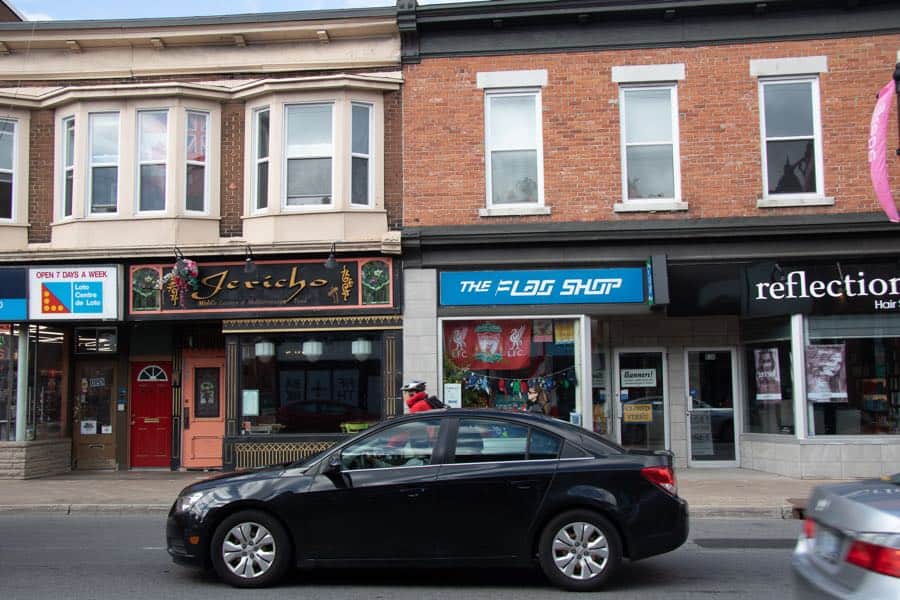
Also, about four in 10 Glebites are renters. Sure, there are posh condos and grand heritage houses, but the ‘hood is also home to Carleton students, young families and others. (It can’t be denied, however, that the Glebe is one of the city’s richer neighbourhoods, with one in four employed residents pulling down more than $80,000 a year.)
Now that I’ve buried the stereotype in Statistics Canada data, I’ll move on to a more burning issue: Why is this leafy little neighbourhood called “the Glebe”?
Where does the name “the Glebe” come from?
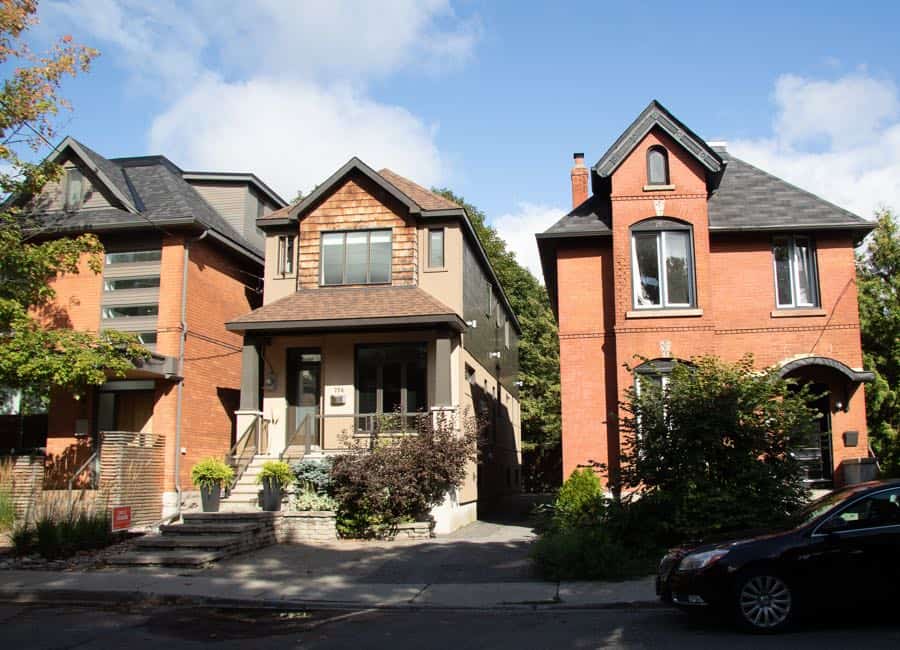
In 1837, the British government gave 178 acres of land to St. Andrew’s Presbyterian Church in Centretown as a “clergy reserve”—basically, a chunk of real estate the church could use to generate revenue. The timing wasn’t the best; that same year, the existence of such clergy reserves helped ignite rebellions across Upper and Lower Canada.
Revolutions aside, the church hung onto the land, which was also known as a “glebe” (a synonym for clergy reserve). Gladstone Avenue was then the city’s official southern boundary, and the land was largely rural until 1870, when significant residential development began. Since people had been calling the area “the glebe” for decades, the name just stuck.
A very brief history of the Glebe
In 1888, a fairground was established at what is now Lansdowne Park. The following year, Ottawa’s city limits were extended to the Rideau Canal, making the Glebe part of the city. And in 1891, the first electric streetcar rattled down Bank Street from Centretown, spurring more development.
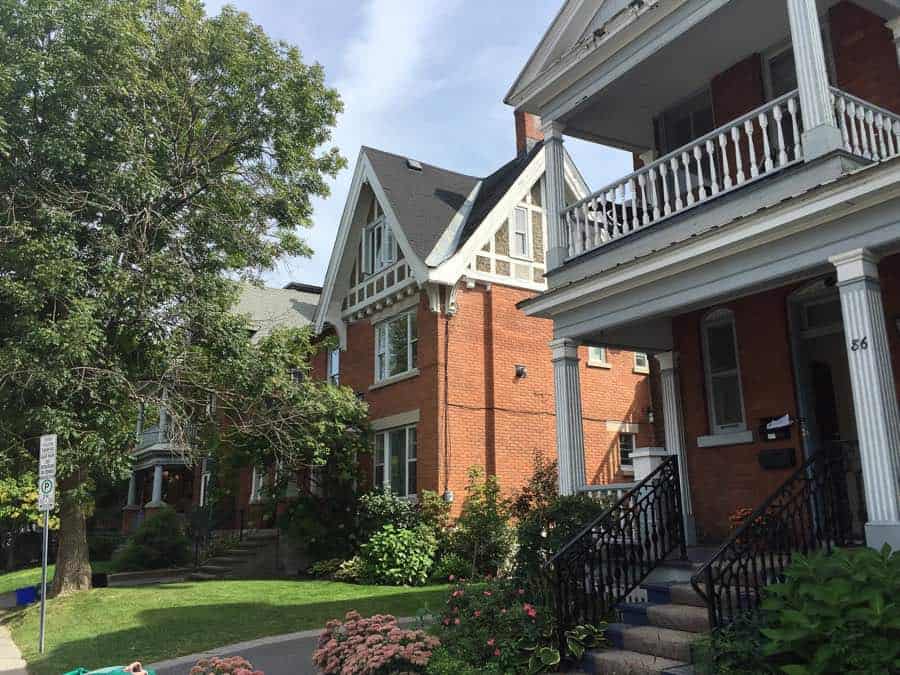
Over the next century or so, slow but steady growth continued.
Carleton University was founded as Carleton College during the Second World War and held its first classes in 1942 in what is now Glebe Collegiate. In 1946, it moved to its first permanent home, in the former Ottawa Ladies College at 268 First Avenue, which had served as a dorm for female soldiers during the war. The building is now—surprise, surprise—condos.
Ottawa’s streetcars disappeared in the late 1950s, replaced by less charming buses.
In the first decades of the 21st century, the Glebe has started changing at a faster pace. The redevelopment of Lansdowne Park is the best-known (and most controversial) recent change to the neighbourhood, but the Glebe has also been evolving in other ways.
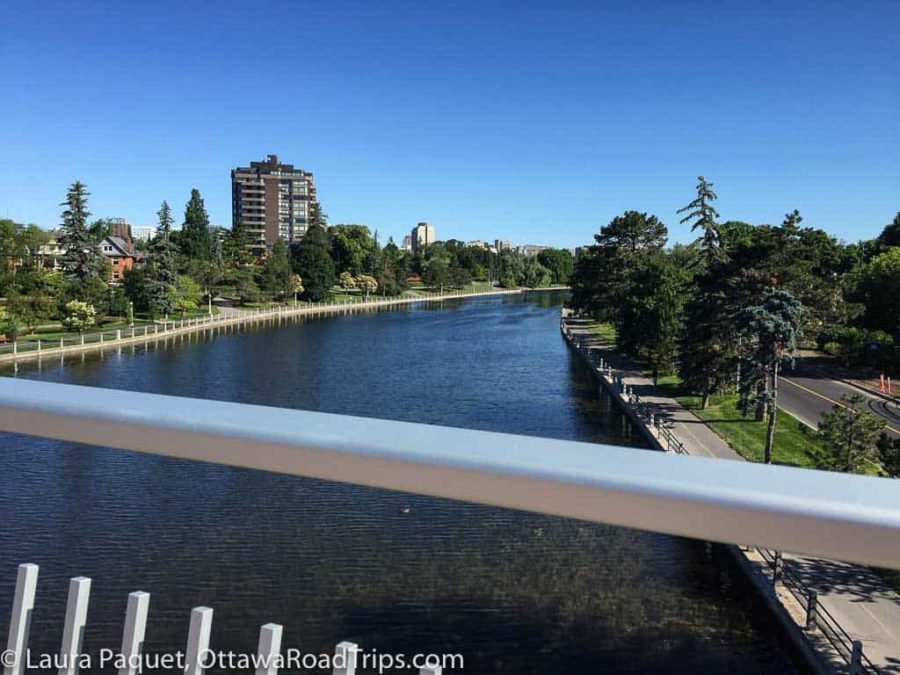
The opening of the Flora Footbridge across the Rideau Canal in 2019 made the neighbourhood much more accessible from Old Ottawa East. And Fifth Avenue Court—an architectural experiment with an indoor courtyard that should have worked but never quite did—fell to the wreckers’ ball in late 2020, to be replaced by condos.
Despite all the changes, the Glebe’s famous community spirit remains. Popular annual events (pandemics permitting) include the massive Great Glebe Garage Sale (May), Glebe Art in Our Gardens (July) and the Glebe Craft & Artisan Fair (November). TD Place at Lansdowne Park, meanwhile, hosts Ottawa RedBlacks CFL football games, Ottawa ‘67s OHL hockey games, Atlético Ottawa Canadian Premier League soccer matches, and all sorts of concerts and festivals.
Shopping in the Glebe
Every December, the stretch of Bank Street that runs through the Glebe is packed with holiday shoppers. Given the number of fun and/or indulgent stores full of gift-worthy items, perhaps that’s no surprise. (I suspect most people are carrying treats for themselves as well as presents for others.)
For sporty types, there’s Top of the World Skate Shop (581 Bank Street), Kunstadt Sports (680 Bank Street), Joe Mamma Cycles (767 Bank Street) and the Team Shop (1015 Bank Street; Redblacks and Ottawa ‘67s gear).
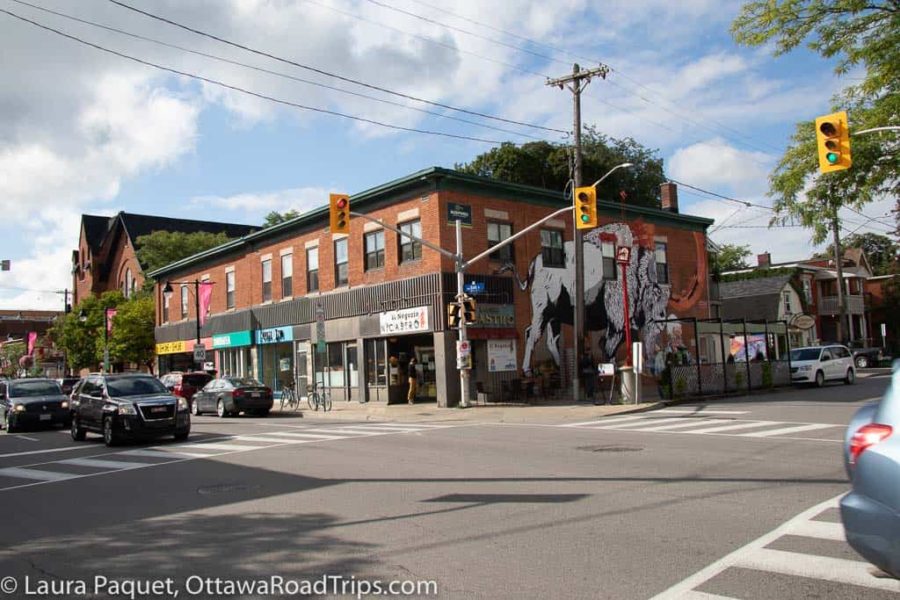
If beauty’s your bag, pop into ORESTA (464 O’Connor Street; organic skin care products) or Purple Urchin (755 Bank Street; vegetarian/vegan soaps and lotions).
Women can freshen up their wardrobe at Escape Clothing (703 Bank Street), set off with some bling from Davidson’s Glebe Jewellers (790 Bank Street) or Magpie Jewellery (799 Bank Street). Gentlemen-about-town, meanwhile, can get GQ-esque casual wear, accessories and grooming supplies at Stomping Ground (728 Bank Street), and hats worthy of Cary Grant at Mickle Macks Haberdashery (835 Bank Street) before dropping into the Imperial Barber Shop (837 Bank Street) for a wet shave.
Specialty shops include Chris Green Stamps (151 Second Avenue), lefty Octopus Books (116 Third Avenue), Compact Music (785 Bank Street; CDs and vinyl), Readi Set Go (793 Bank Street; lunchboxes, backpacks, luggage and travel accessories), The Flag Shop (838 Bank Street) and The Papery (850 Bank Street; cards, notebooks, wrapping paper and calligraphy supplies). So many cannabis shops have sprung up recently that I can’t even keep track of them all. And for keen home chefs, there’s J.D. Adam Kitchen Company (795 Bank Street) and Knifewear (800 Bank Street).
Restaurants and food shops
Speaking of home chefs, the Glebe is a great place to shop for primo ingredients for a special meal. Try The Unrefined Olive (151 Second Avenue; oils and vinegars), Il Negozio Nicastro (792 Bank Street; Italian cheeses, meats and packaged foods), the Glebe Meat Market (869 Bank Street) and the city’s first Whole Foods Market (951 Bank Street). On Sundays, vendors at the Ottawa Farmers’ Market at Lansdowne Park sell everything from boar salami to dulce de leche.
Prefer to leave the cooking to others? The Glebe is packed with restaurants—the following is just the short list.
On the casual side, the Clocktower Brew Pub (575 Bank Street) makes its own beers and the Glebe Central Pub (779 Bank Street) has a lovely long wooden bar. Irene’s Pub (885 Bank Street) is known for its busy live music schedule, but here’s something you might not know: It has a small, secluded patio out back that’s heaven on a summer night. For a more raucous vibe, the huge CRAFT Beer Market (975 Bank Street) serves brews from around the world.
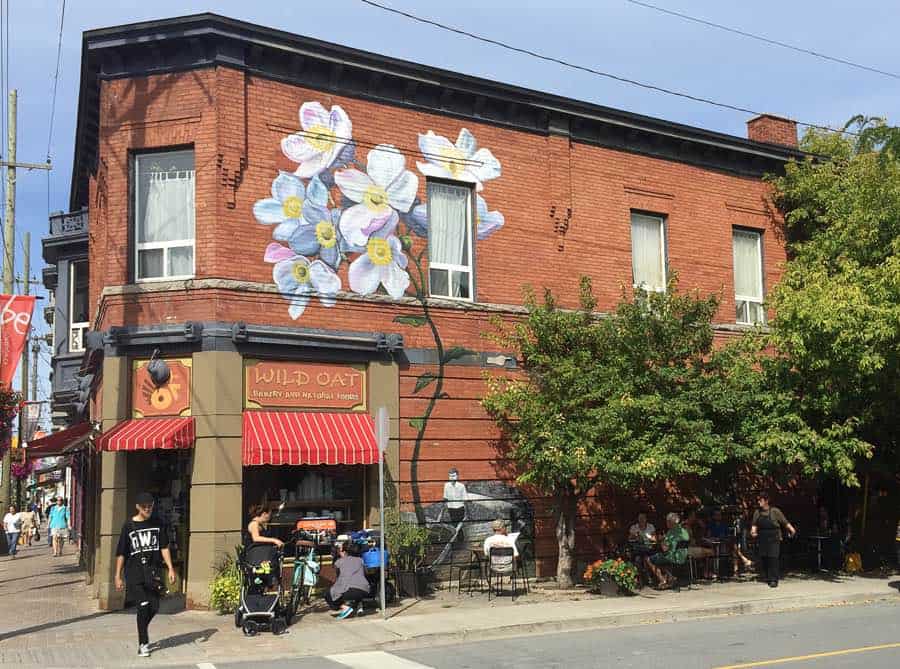
The Glebe is also well stocked with Indian restaurants, including Taj Mahal (925 Bank Street) and Light of India (730 Bank Street), each with its passionate fans. To try some unfamiliar dishes, head to Thanjai (108 Third Avenue). There, along with the usual onion bhaji and butter chicken, you’ll find South Indian dosas—paper-thin crepes stuffed with just about anything imaginable (including lots of vegetarian options).
Feeling festive? Try the small plates at Erling’s Variety (225 Strathcona Avenue), fine wines and steak frites at 107 Fourth Avenue Wine Bar & Café (107 Fourth Avenue) or seasonal fare at The Rowan (915 Bank Street).
There’s also the one-of-a-kind Jericho (840 Bank Street). The menu features standard Lebanese fare, but it’s the over-the-top décor that makes it worth a stop. Surrounded by colourful Mediterranean artwork and glittery mirrors, you’ll feel like you’re eating your shawarma inside a jewel box.
Finally, humans can’t live on bread alone, but it certainly helps. For your baked-goods fix, try custom-made cakes at Second Avenue Sweets (151 Second Avenue), whole-grain loaves at Wild Oat Bakery (817 Bank Street), flaky baklava from La Brioche Pastry and Bakery (866 Bank Street) or Montreal-style bagels with house-smoked salmon at 24-hour Kettleman’s Bagel Co. (912 Bank Street).
The Aberdeen Pavilion (AKA the Cattle Castle)
Presiding over the glassy mega-structures of the redeveloped Lansdowne Park like Maggie Smith lording it over lesser beings in Downton Abbey, the Aberdeen Pavilion is one of the Glebe’s most treasured historical landmarks. Built in just two months in 1898 as a fairground exhibition hall, the domed Victorian behemoth—it looks like the Taj Mahal crossed with a giant Quonset hut—has had many roles in its long life.
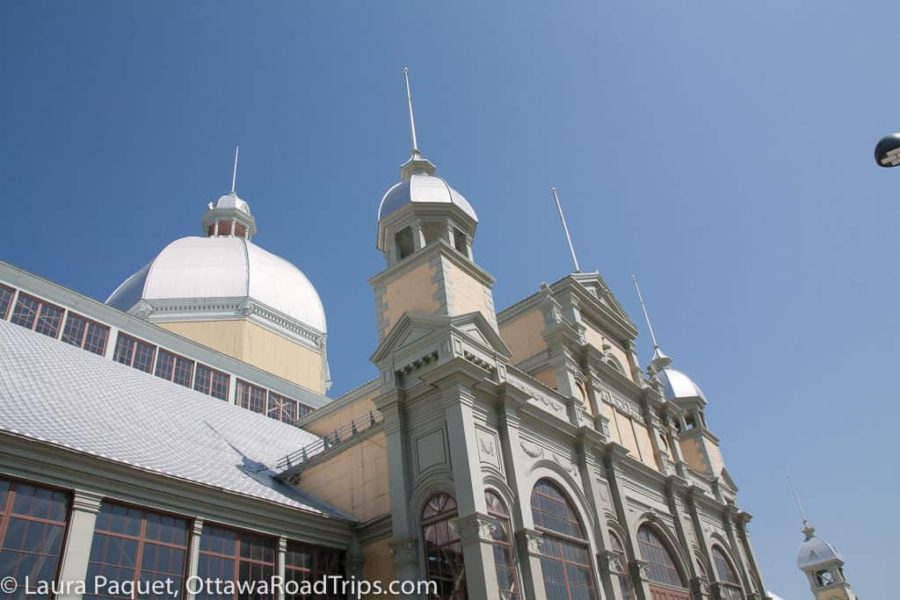
In 1904, the original incarnation of the Ottawa Senators won the Stanley Cup on a long-gone ice rink inside. During both world wars, the military used the building for various purposes. And it was so popular for agricultural exhibitions that it was nicknamed the Cattle Castle.
By 1991, though, it was such a rusting hulk that Ottawa City Council voted to demolish it—and then all holy hell broke out.
Faced with community outrage in the Glebe and beyond, council backtracked and spent $5.3 million to restore it to all its shiny, drafty glory. (Yes, drafty—it’s impossible to properly heat this cavernous metallic space, so bring your woollies if you’re checking out a winter event.)
How to get to the Glebe
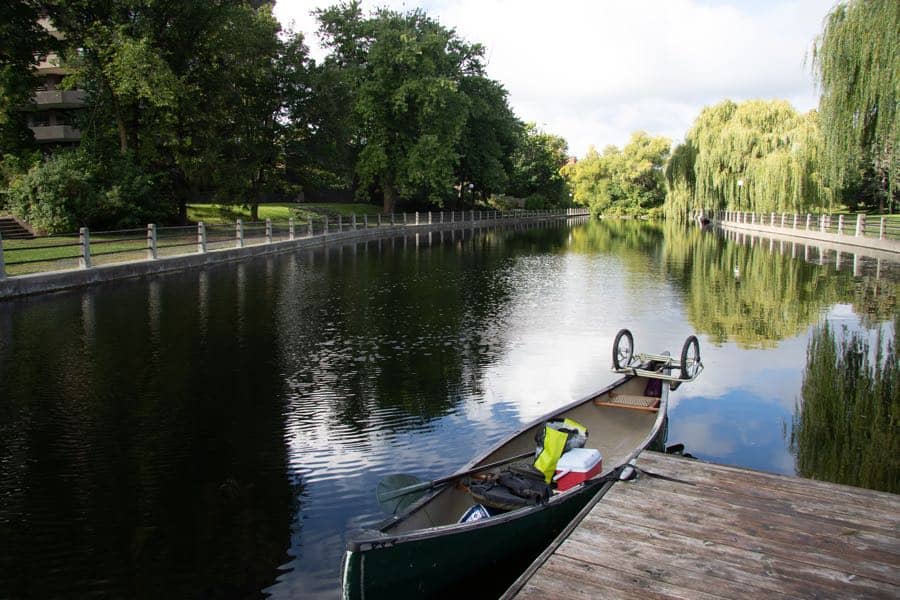
Just two kilometres south of Parliament Hill, the Glebe is easy to reach. You can drive, but I wouldn’t, as parking on side streets can be scarce and paid parking is pricy. And why bother with a car when you can take OC Transpo straight down Bank Street, or walk or cycle to the Glebe along the scenic Queen Elizabeth Driveway? Heck, you can even skate there in winter or paddle there in summer, along the Rideau Canal. (There’s a seasonal dock on Patterson Creek, just off the canal between Linden Terrace and First Avenue. Nearby, a small Spanish Colonial Revival structure built in 1923 is arguably Ottawa’s most architecturally significant public washroom.)
For more information, check the websites of the Glebe BIA and the Glebe Community Association.
If you enjoyed this post, check out my guides to three other central Ottawa neighbourhoods: New Edinburgh, Westboro and Little Italy.
Looking for more ideas for things to see and do in and around Ottawa? Subscribe to my free weekly newsletter or pick up a copy of my book, Ottawa Road Trips: Your 100-km Getaway Guide, from which this post is adapted.
As the owner of Ottawa Road Trips, I acknowledge that I live on, work in and travel through the unceded, unsurrendered territory of the Algonquin Anishinaabeg Nation. I am grateful to have the opportunity to be present on this land. Ottawa Road Trips supports Water First, a non-profit organization that helps address water challenges in Indigenous communities in Canada through education, training and meaningful collaboration.

3 comments
[…] Want to discover some other cool downtown Ottawa neighbourhoods? Check out my posts on Westboro, Little Italy, New Edinburgh and the Glebe. […]
[…] you like exploring downtown Ottawa neighbourhoods, check out my guides to the Glebe, Little Italy, New Edinburgh, Wellington West/Hintonburg and […]
[…] Check out my detailed guide to the Glebe and guide to Old Ottawa […]